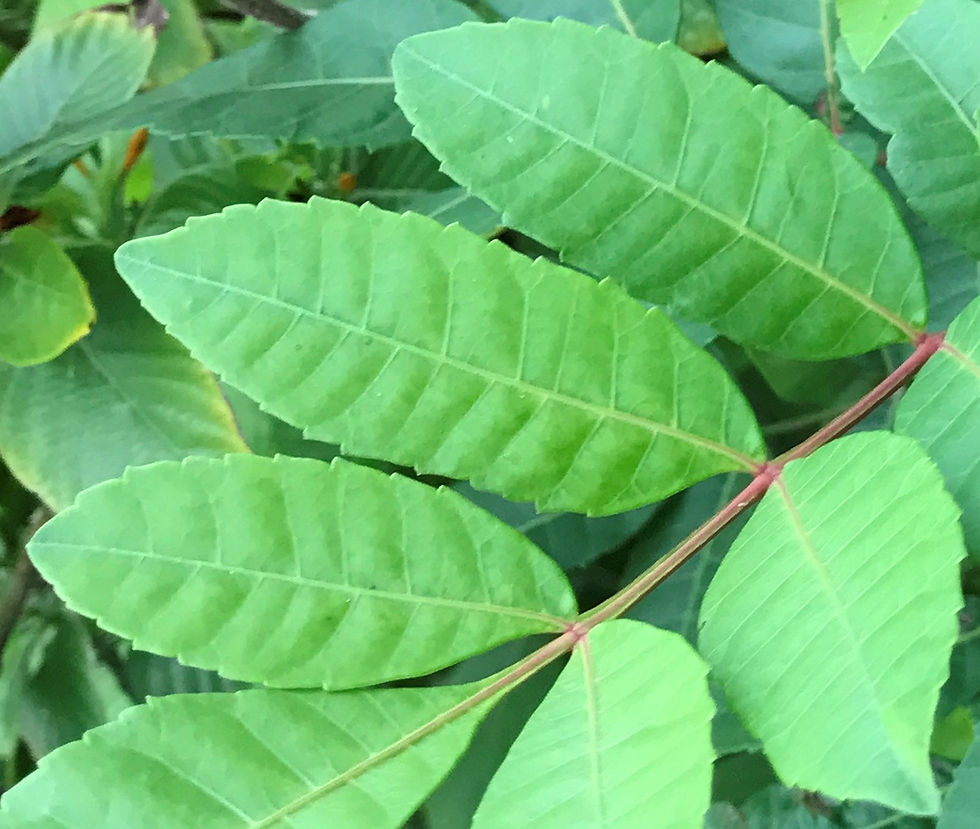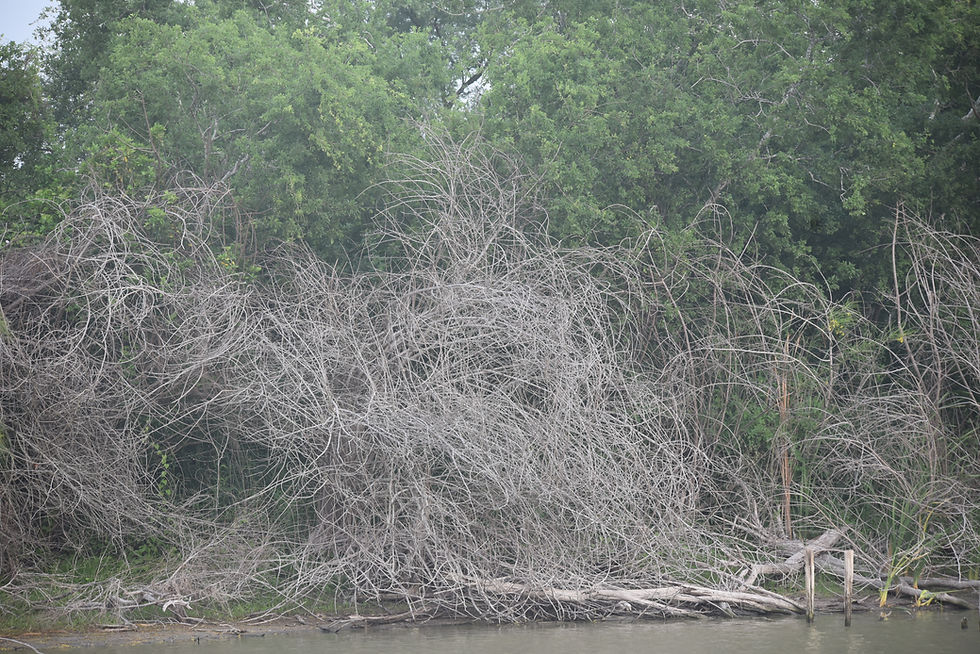Anita’s Blog – Opportunity for Discoveries
- jjvanm
- May 9, 2022
- 4 min read
The annual City Nature Challenge is always fun. It’s a special time on a global level and critically important on a local level because it gives landowners a dedicated opportunity to discover that dreadful of all dreadfuls: the invasive species.
As I was swimming through a patch of pop-up gaura and tropical sage behind my buddleja shrubs, I spied a clandestine trio of Brazilian peppertrees (Schinus terebinthifolius) that had shot up to a height of three feet. That made me think it was time to talk about the Brazilian peppertree in my blog again.
In the tally of the 2022 CNC, there were 23 observations of Brazilian peppertree uploaded during the four-day bioblitz – not that that number is indicative of anything on its own, I looked it up out of curiosity to see how many others had reported the species.
In our small acreage, I pulled up three small Brazilian peppertrees and will do the same with this small crop that I saved to photograph for this blog post.
There are three easy things to remember to identify Brazilian peppertrees:
1. Prominent leaf venation
2. New growth is a shiny burnished/bronzy color in contrast with the older green leaves
3. Young stems are bright red



If left to mature, by December, the deep red clusters of berries and dark green foliage present a beautiful Christmas-card effect, but we don’t want to let that happen. Brazilian peppertree is native to Brazil and no doubt acts differently in its homeland. In the Rio Grande Valley, the species is harmful and is number six on the South Texas Plains’ Dirty Dozen Terrestrial Invasive Species list. Check out more about that list at this link:
I can easily rip small errant Brazilian peppertrees out of the ground, roots and all, when I find them, but either the birds have found new trees and were eating berries last fall and inadvertently planting seeds, or the seeds can remain viable in the ground indefinitely. Ah, but no. One Internet site mentions that seeds are viable for up to two months; more than likely, there are surviving plants from the great freeze of 2021.
A couple of days after the CNC observation period, I was again prompted to write about these invasive trees when my Texas Invasives April newsletter arrived in my e-mail and their Invasive Spotlight was on the Brazilian peppertree. Here’s that link for the full story, https://www.texasinvasives.org/pages/iwire/April_2022.html -- scroll down to the “Invasive Spotlight:” Brazilian peppertree.
This is an excerpt from that article about Brazilian peppertrees: “This plant is considered one of the greatest threats to native biodiversity for its dramatic effect on both plant and animal communities by reducing quality of life.” Brazilian peppertree is a Texas Department of Agriculture noxious weed and a Texas Parks and Wildlife Department prohibited exotic species. The article also indicated that Brazilian peppertrees are closely related to poison oak and poison ivy (all in the family Anacardiaceae), and those who are allergic to poison oak and ivy will likely be allergic to the peppertrees.
Do go to the link for more information – and something new: “The Brazilian peppertree thrip (Pseudophilpthrips ichini) is a new potential biological control agent that could help with the Brazilian peppertree problem. These thrips have been studied for over two decades in Florida. Host specificity experiments demonstrate that it has a limited host range and can cause a severe reduction of Brazilian peppertree biomass. They were released in certain Florida counties in 2019. Recently, some Texas counties with Brazilian peppertree overgrowth have received USDA APHIS approval for release. We could see release dates and biocontrol projects begin as soon as this year.”
You can sign up to receive the free monthly electronic newsletter about Texas invasive species at the above link.
Just as a matter of interest, last year, there was a project afoot about the effects of the 2021 February freeze on the Brazilian peppertrees in Texas. Specifically, from the project background paper: “The recent cold event in Texas (February 2021) provides a once-in-several decade opportunity to advance understanding of the effects of extreme cold events on Brazilian pepper (Schinus terebinthifolius), which is an invasive non-native, cold-sensitive plant present along the Texas coast.”
I offered to participate because the opposite bank of our resaca is lined with the trees. The freeze killed them. They are still dead, as in they did not come back to life or sprout up from the roots. The opposite bank of the resaca is not our land, so the dead trees remain large blobs of brown riparian scenery. It’s been 15 months since that freeze and no sign of those large peppertrees returning to life. I sometimes think, yay! We won. But probably not. And indeed not, since they’ll probably remain as an unsightly view for all of perpetuity, or until they rot and fall over with the wind.



I’m trying to find the results of that study. In the end, I couldn’t get to the far bank and secure an exact GPS location nor produce an accurate height of the Brazilian peppertrees, so I was not asked to remain in the study. If any of you were included in that study, we’d like to hear about your participation.
Lower Rio Grande Valley Most Observed Species: If you're interested to see the most observed species during the 2022 City Nature Challenge for our Lower Rio Grande Valley area, visit this link:
- 30 -





